  Regardez cette page en franšais en cliquant sur sur le bouton de Google ci-dessous Regardez cette page en franšais en cliquant sur sur le bouton de Google ci-dessous
|

|
|
Henry Moore
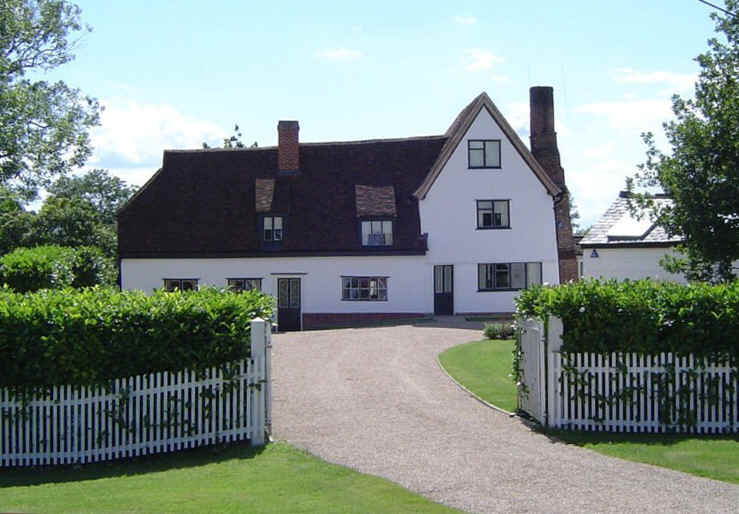 |
|
I
recently spent a summer Saturday paying a to visit to Henry Moore's house and gardens near Much Hadham in
Hertfordshire. Set in
amidst delightful countryside this large site features the home, grounds
and galleries where Henry Moore lived and worked from the 1940's until
his death in 1986.
|
|
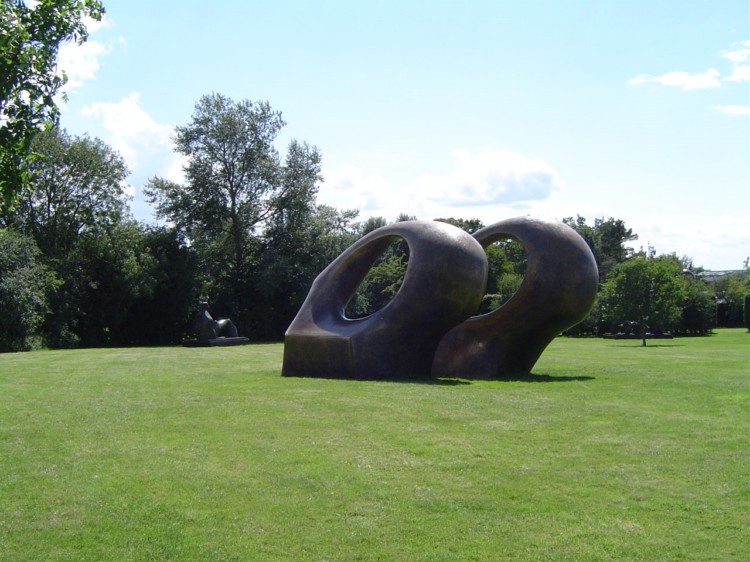 |
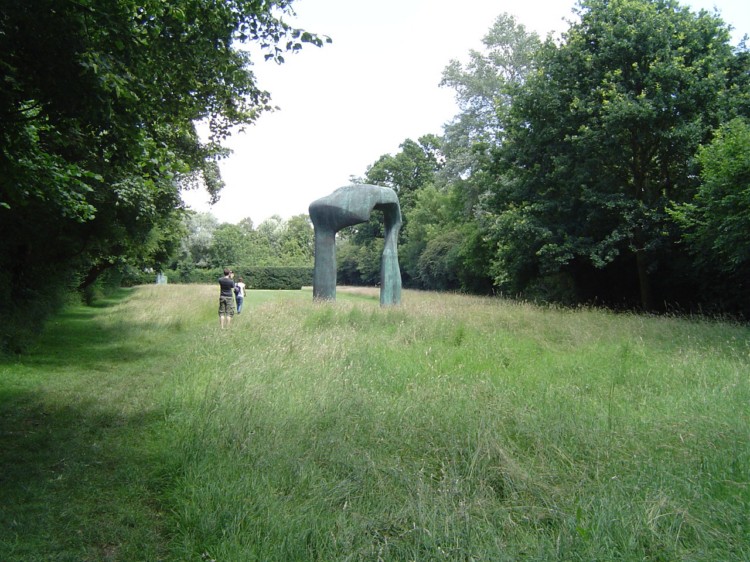 |
|
Beyond
the house there are extensive grounds, which are laid out with lawns,
meadows, orchards and woods. A selection of Moore's works are on
display, changing from time to time as some pieces are lent out for exhibitions.
|
 |
|
This
central lawned area featured an interesting mixture of works of varying
size and subjects. The
nearest sculpture is called 'Oval with Points'.
|
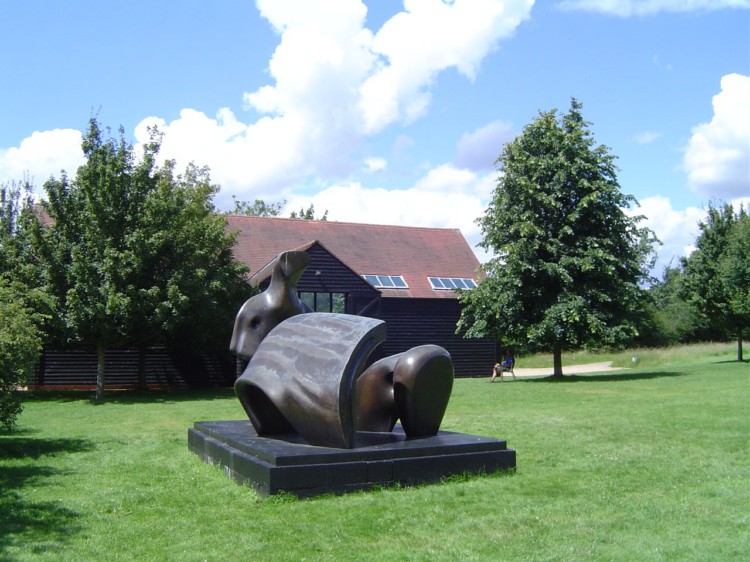 |
|
A
number of barns and workshops are dotted around the site. This old barn
has been sympathetically restored, and is a stunning setting for the display
of some of Moore's beautiful tapestries. No photography is allowed inside the
buildings, but if you would like to view these works, you can see them
on the Henry Moore Foundation website.
|
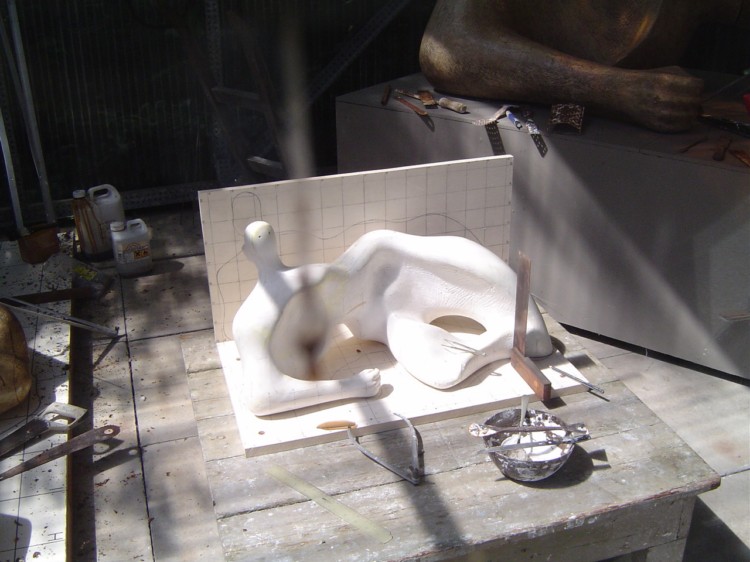 |
|
An
interesting insight into the methods of construction and materials that
Moore employed can be found in the various workshops. Moore constructed many small
small models like this one, at the design stage of his massive works. He had a succession of
assistants over the years, to help him complete the structures. His
works are made from a variety of materials, including fibreglass, marble
and bronze.
|
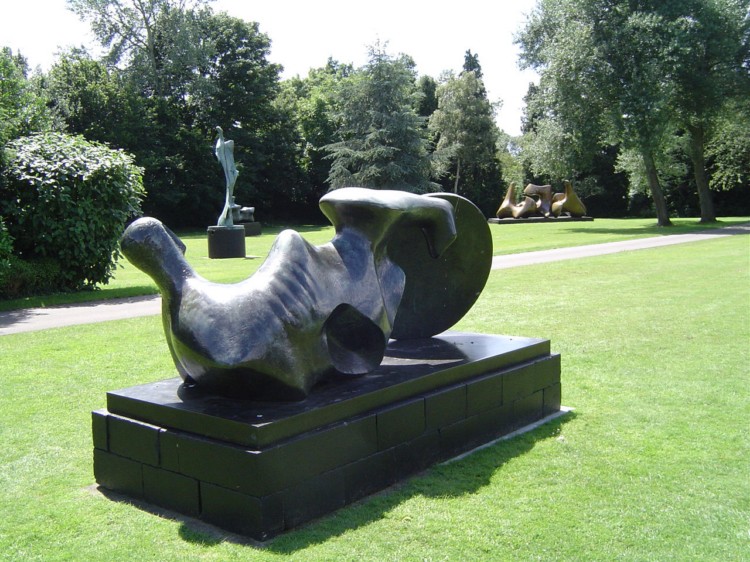 |
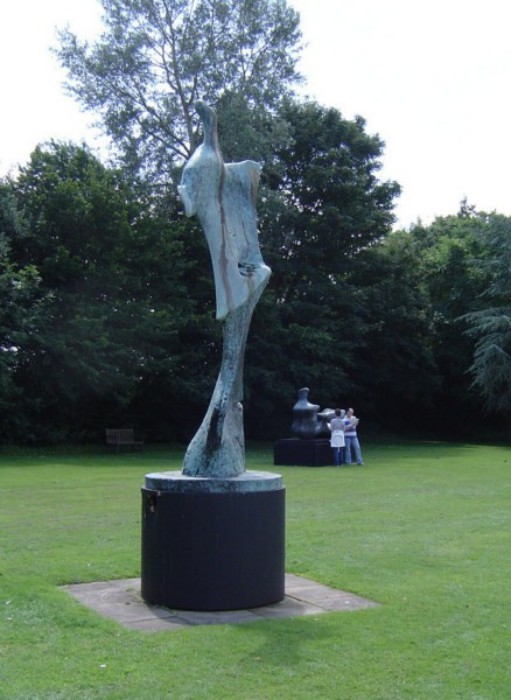 |
|
Many
of the pieces represented human forms.
|
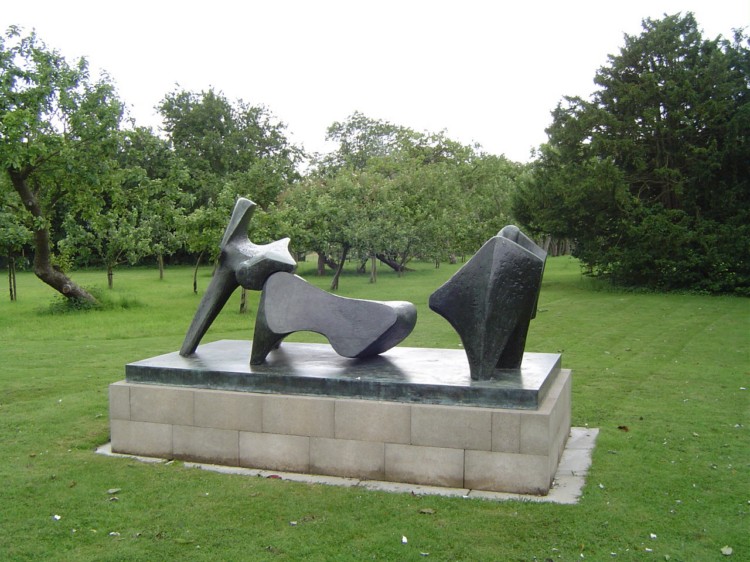 |
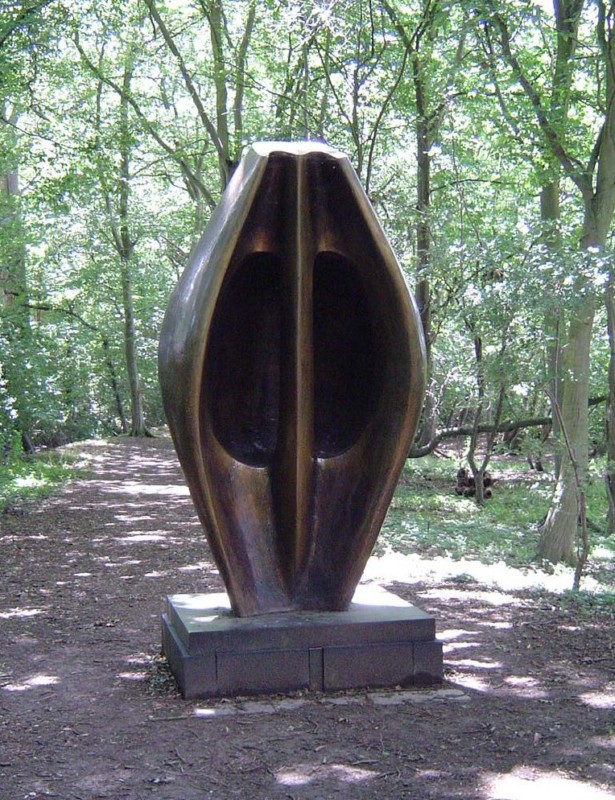
Some
works were placed amongst the trees, either in the orchards or along a
woodland path. This woodland piece represents a head.
|
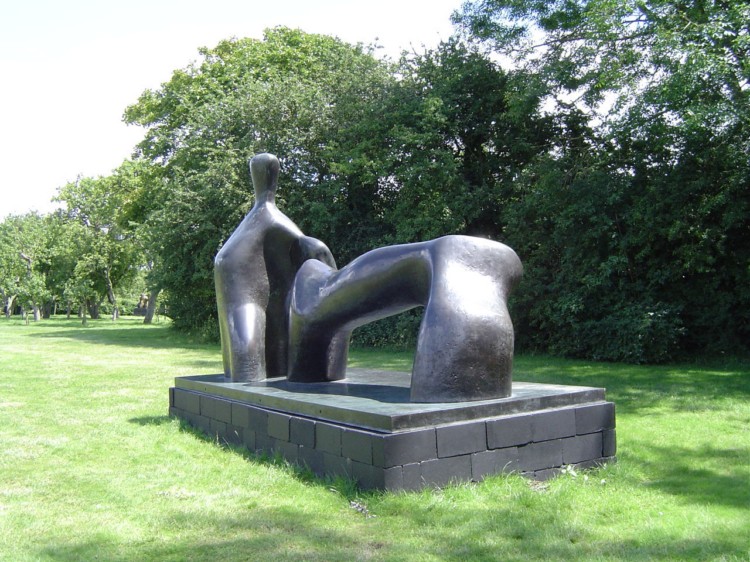 |
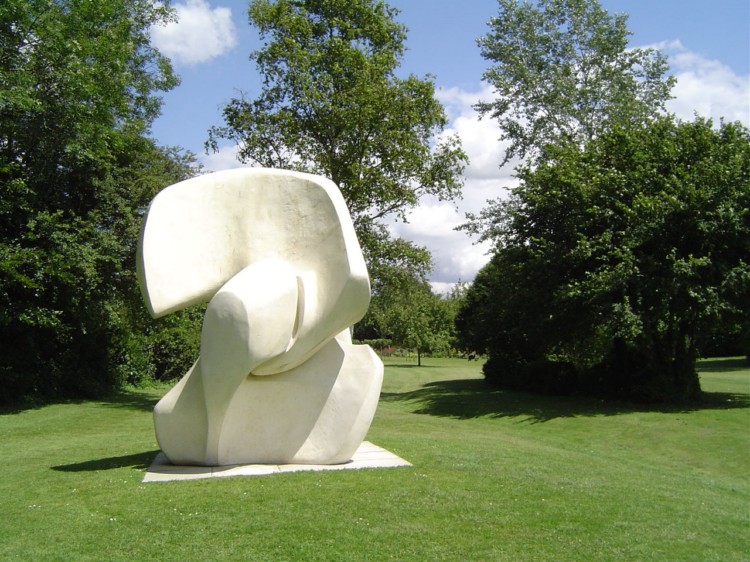 |
|
You
were allowed to touch the works in the grounds, and many people did so; they are very
tactile pieces.
|
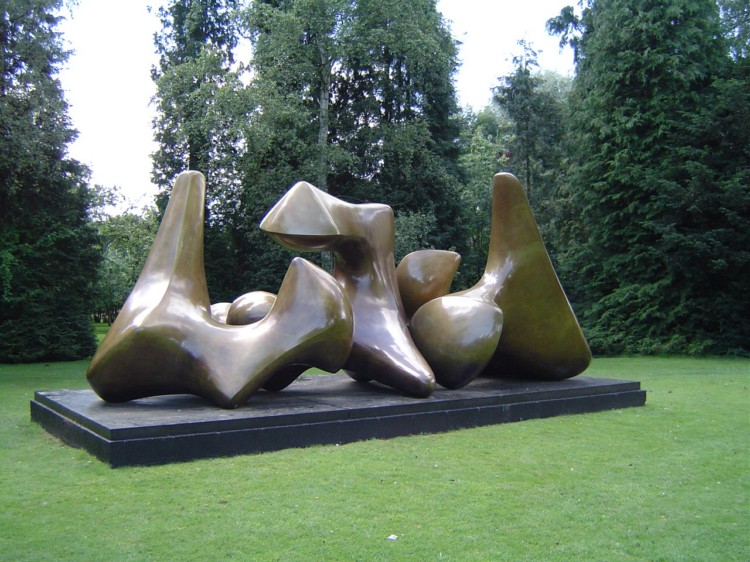 |
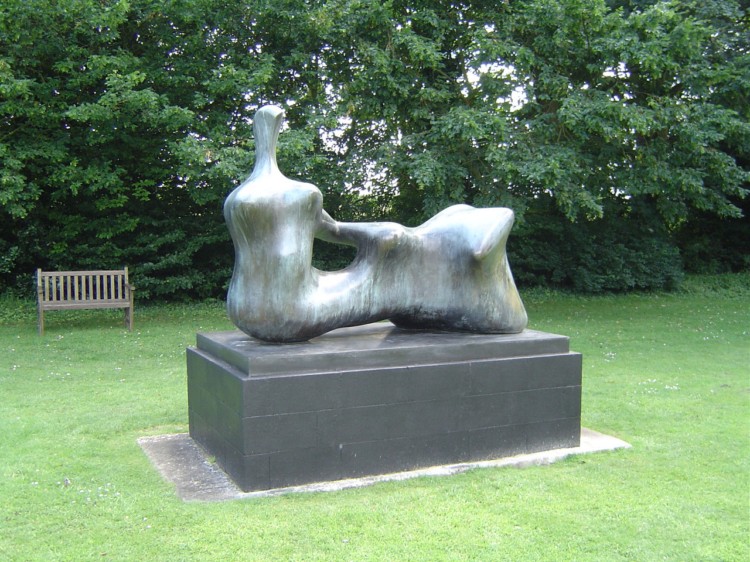 |
|
A
number of works resemble human vertebra, whilst another recurrent theme
is that of reclining human forms. Moore also took inspiration from the
weathered rocks and flints found in the ground locally.
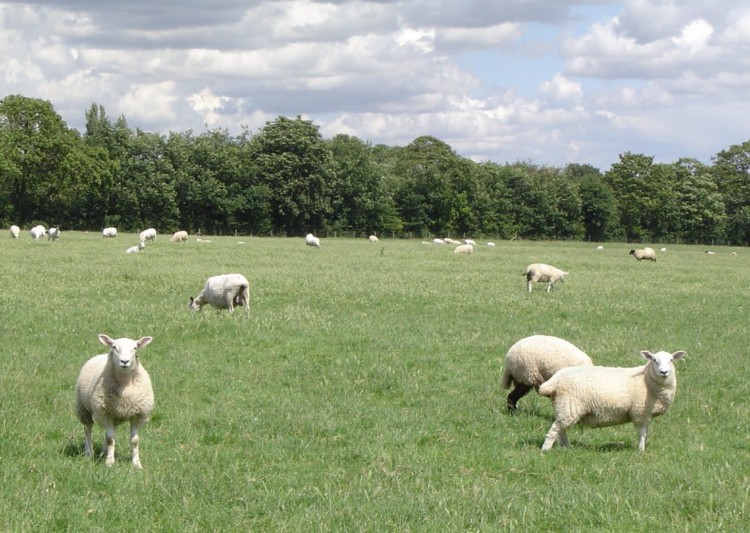
|
|
One of Henry Moore's
workshops overlooks this field. Moore would often sit at his desk and
sketch the sheep. Although in this case, the sheep were watching
us!
|
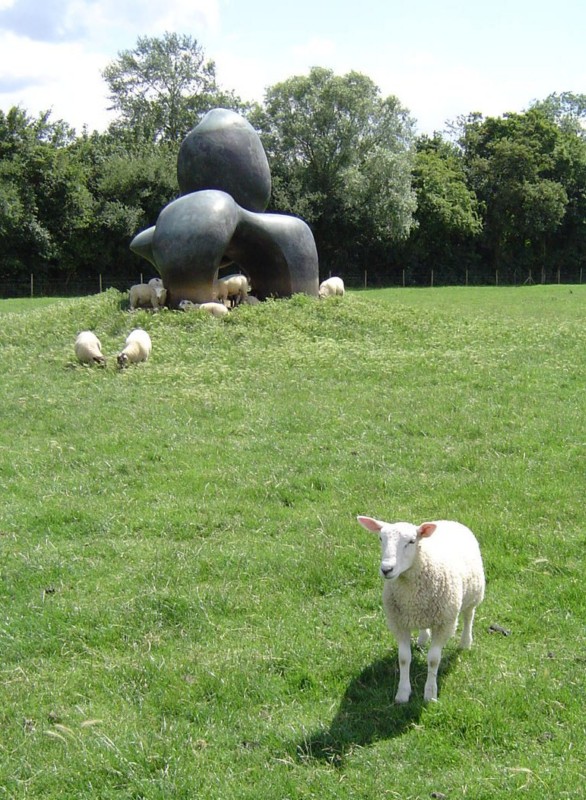
This
work provided shade for the sheep. I think they must be very used to people
visiting as a number of sheep approached, probably looking for food!
|
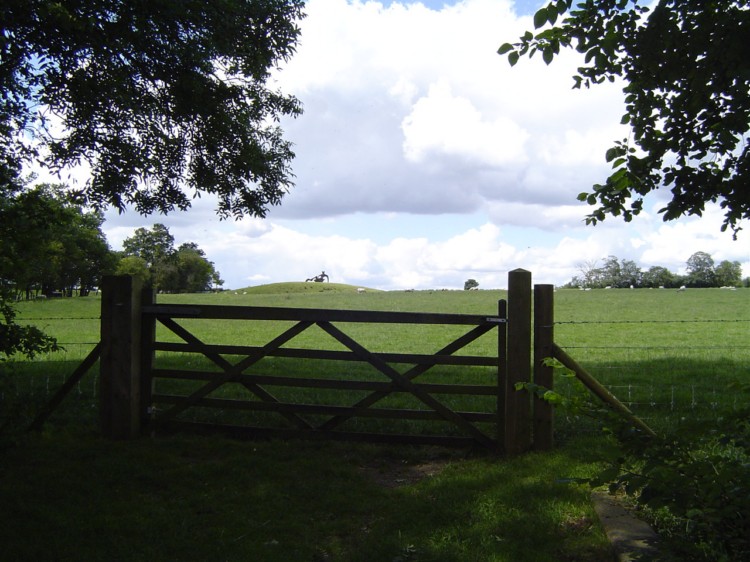 |
|
This
massive sculpture, placed on a small artificial hill, could be seen from
various points around the grounds.
|
|
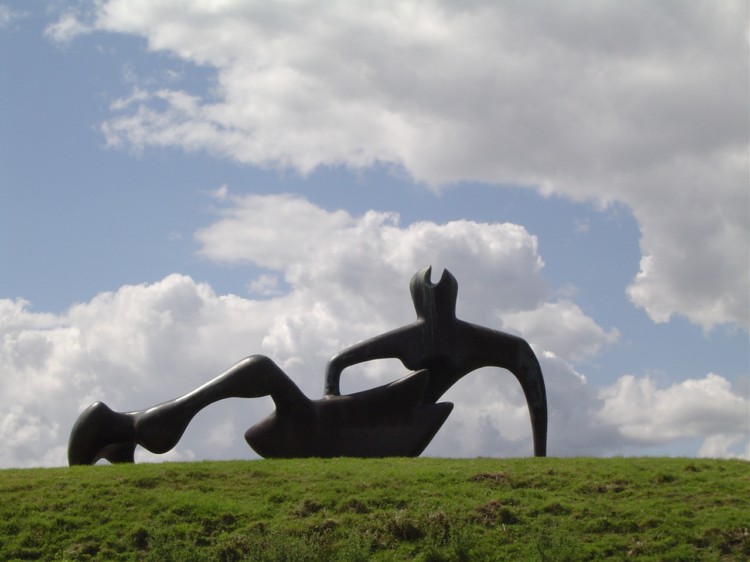 |
|
It
certainly looked impressive set against the ever-changing cloud formations.
|
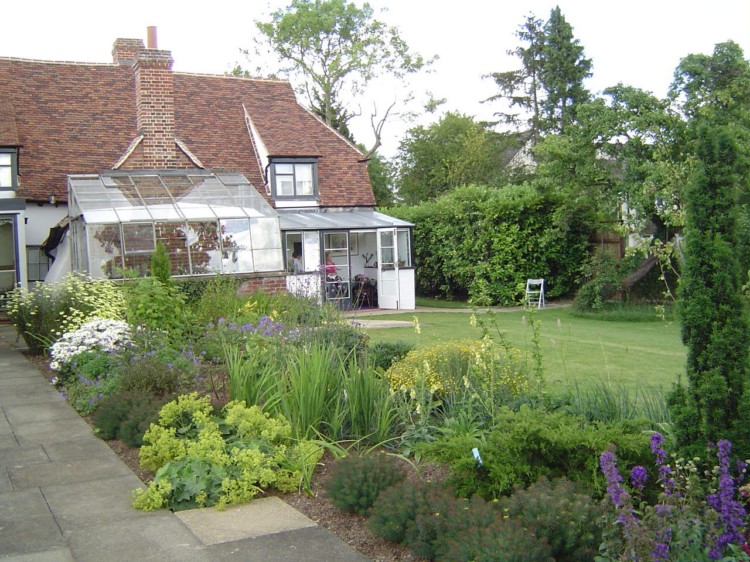 |
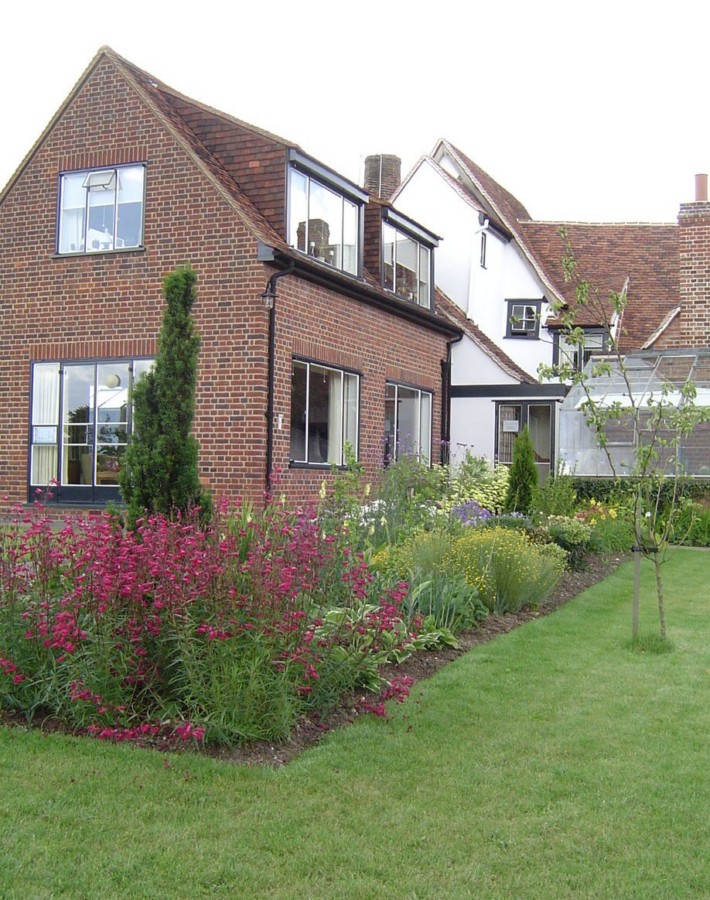 |
|
Moore's
house, called 'Hoglands' was purchased with the profits from the sale of
some of his works. The house overlooks an attractive 'cottage' style
garden.
|
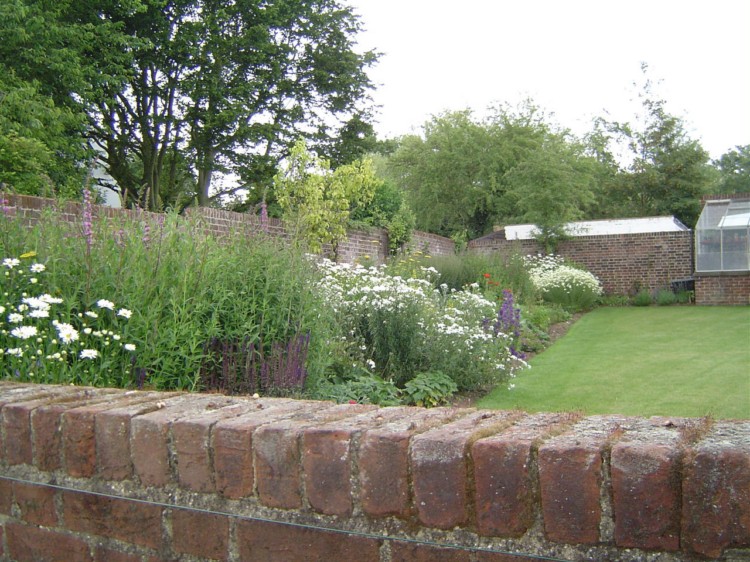 |
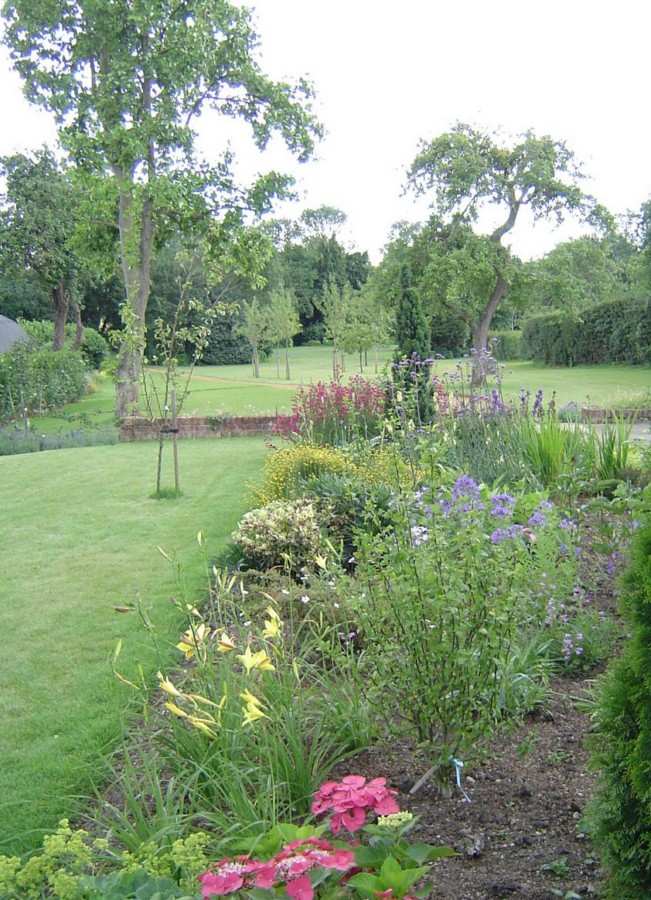 |
|
|
Beyond
the herbaceous borders the garden leads out into the grounds where the
sculptures are displayed.
Further details of
the work of Henry Moore can be found at this site http://www.henry-moore-fdn.co.uk/
|
|
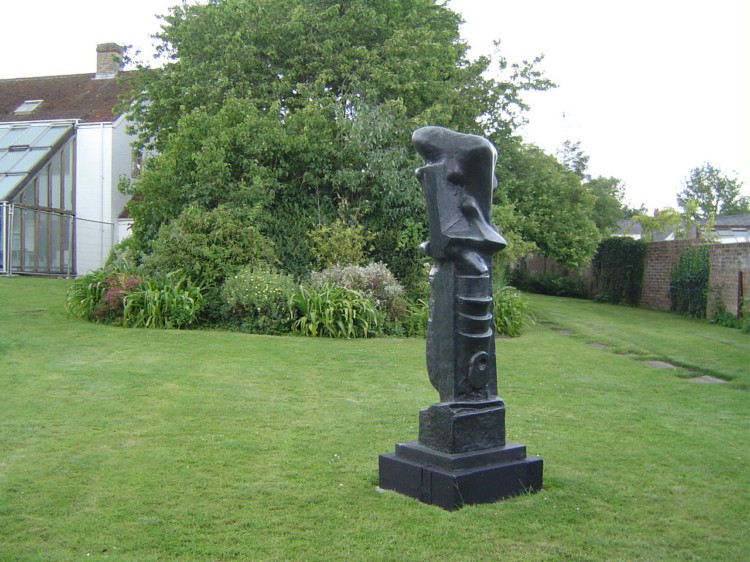 |
|
|
|

|
La lešon anglaise, anglaise Ó, des vacances anglaises, campagne, jardin anglais, jardins anglais, jardin anglais de pays, l'anglais de jardins, conception de jardin, jardin voyage, maison fait du jardinage, de petits jardins, paysage anglais, rose de l'anglais, roses anglaises, roses de jardin, roses, roses s'Úlevantes, beale de peter, rosier, roses roses, campagne britannique,
|

|
|
